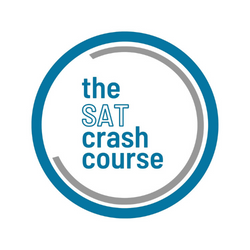Even though many colleges have adopted test-optional policies due to Covid-19, submitting a competitive SAT score can still enhance your chances of acceptance. Achieving a high score may seem challenging for beginners, but you can complete your preparation efficiently with the right approach and sufficient dedication.
Numerous SAT prep courses and tutoring options are available, but you can also choose to study independently and achieve your desired score. Without a predetermined course curriculum, you will need to create your own study plan and gather reliable resources to stay on track. The following four-step process will help you successfully navigate your SAT self-study journey.
Take an Official Practice Test
Establishing a baseline score will help you strategically plan the number of study hours required to achieve your target score. You can access printable official tests created by the test-makers through College Board or Khan Academy (sign-up required for Khan Academy).
Consider taking a shortened version of a full 3-hour test seems too demanding. Though it won’t cover all question types, it will still provide an estimated total score. You can take either a 15-minute or 45-minute test here.
Set Your Goal Score & Test Date
With your baseline score, set an end goal by reviewing the SAT scores of applicants at your desired colleges. Aim for a score between the 25th and 75th percentiles. Consult this article for data on popular U.S. schools and a chart that converts SAT composite scores to national percentiles.
Choose an upcoming SAT exam date that aligns with your goals. If you need to increase your score by more than 200 points, consider setting a test date 3-4 months away. It’s recommended to take the test at least twice to benefit from super scoring, so pick a first exam date that allows time for a second attempt before college application deadlines.
Create Your SAT Study Plan
With your goal score in mind, develop a curriculum and study schedule to complete before your exam date. Check the upcoming SAT test dates first in the College Board website. With the given time frame in mind, divide your curriculum into two phases: concept learning and practicing.
Concept Learning:
Review the full content areas for each Reading, Writing, and Math section, assigning a period to study each concept. Listing question types associated with each concept will help you set a realistic timeline and contextualize your learning. Allocate more time to weaker concepts and strategies for solving questions. Most students can cover all concepts in 1-2 months with dedicated study.
Practicing:
After learning the basic concepts, focus on optimizing your test-taking skills through practice tests and reviews. Enhance your skills per question type, solve questions within the time limit, and familiarize yourself with the test format. Ideally, take a full test at least every two weeks, with more frequent tests toward the end of your preparation. Thoroughly review your tests and identify question types that consistently challenge you.
Gather Resources
Prepare study materials that align with your schedule, including:
SAT Prep Books:
There are many useful books, such as The Official SAT Study Guide (College Board) and SAT Prep Black Book. Other helpful self-study books include:
- The Critical Reader: The Complete Guide to SAT Reading
- Barron’s SAT Study Guide
- Kaplan SAT Prep Plus 2022
- The Princeton Review SAT Premium Prep
Free Online Courses:
SAT Prep Khan Academy offers a free program developed with College Board, including videos, explanations, and official practice questions. While comprehensive, some students may require additional materials for strategy practice. Consider self-paced courses to minimize costs and access valuable resources, including Q&A support when needed.
Final Tips Before You Start
Give yourself credit for undertaking SAT preparation independently. Maintaining discipline and staying accountable may be challenging, but witnessing your improvement can be rewarding. To ease into your self-study, set a level of intensity that is “just a little challenging.” Over time, you’ll learn when to study effectively or take breaks. Start with materials at your level and gradually increase the difficulty to avoid becoming overwhelmed, which will help you build your knowledge at your own pace.
What’s Next?
The SAT Crash Course’s SAT Prep Course is designed to support your self-study efforts. This comprehensive package includes personalized study plans, bite-sized lesson videos, and practice problem sets – all at a highly affordable price. Enroll today and start optimizing your SAT self-study experience for a fast result!

